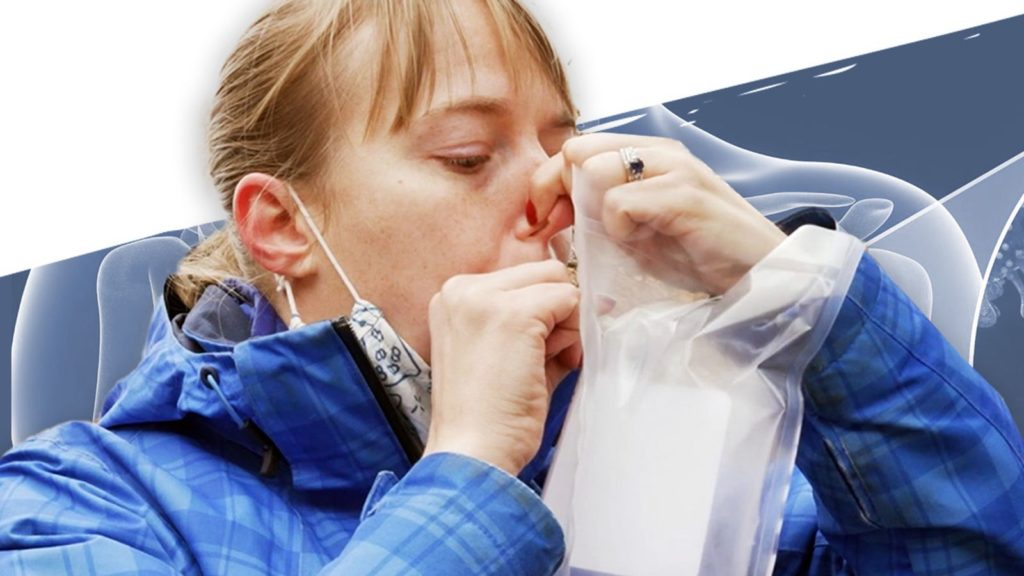Breathalyser can sniff out diseases in real-time – and could attach to your phone | US News

A new breathalyser sniffs out COVID in real-time and could be used to detect lung disease and cancer.
At the moment the laser-based breathalyser is the size of a large table, but scientists hope to scale it down to be small enough to attach to a phone.
Senior author of the study Jun Ye, a professor of physics at the University of Colorado Boulder, said the potential for the technology was “endless”.
“There is a real, foreseeable future in which you could go to the doctor and have your breath measured along with your height and weight,” he said.
“Or you could blow into a mouthpiece integrated into your phone and get information about your health in real-time.”
The initial study using the breathalyser, which is powered by AI, found it detected COVID-19 in real-time with excellent accuracy.
Between May 2021 and January 2022, the research team collected breath samples from 170 people who had been tested for COVID. Half had tested positive, half negative.
When compared with PCR results, the breathalyser got it right 85% of the time. For medical diagnostics, accuracy of 80% or greater is considered “excellent”.
The breathalyser is made up of a complex construction of lasers and mirrors. The breath sample is piped in as lasers fire invisible mid-infrared light at it at thousands of different frequencies.
Because each kind of molecule absorbs light differently, breath samples with a different molecular make-up cast distinct shadows.
The machine interprets these shadows and can determine – in the case of COVID – whether the sample is positive or negative.
The team is now looking at a range of other diseases in the hope the breathalyser could revolutionise medical diagnostics.
Read more on Sky News:
UK’s first ‘three-parent baby’ born after IVF procedure
TikTok vaping adverts for Elf Bar and HQD Tech banned by UK watchdog
First author Qizhong Liang, a PhD candidate at CU Boulder, explained how AI had been used to power the technology.
“Molecules increase or decrease in concentrations when associated with specific health conditions,” he said.
“Machine learning analyses this information, identifies patterns and develops criteria we can use to predict a diagnosis.”
He added the results show “remarkable potential for diagnosing diverse conditions and disease states”.
Unlike other tests, the breathalyser is non-invasive and could even be used on patients who are unconscious.

Recent Comments